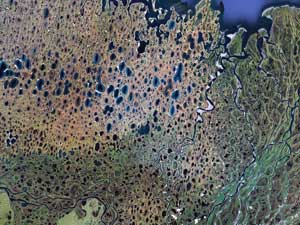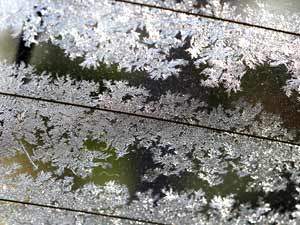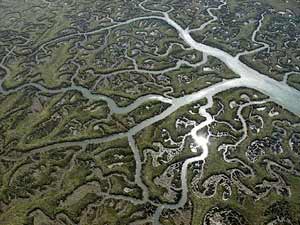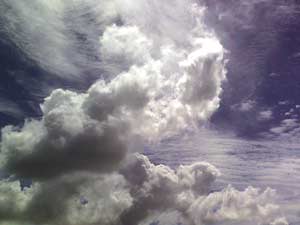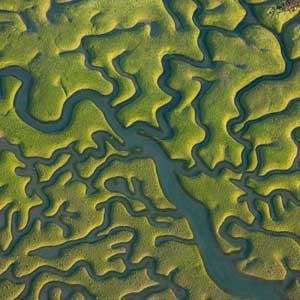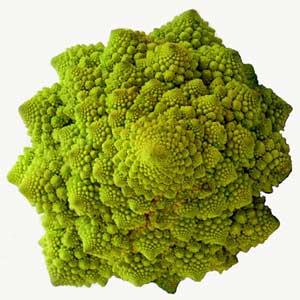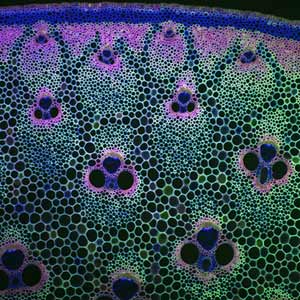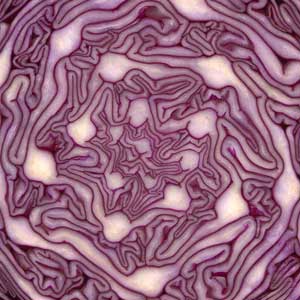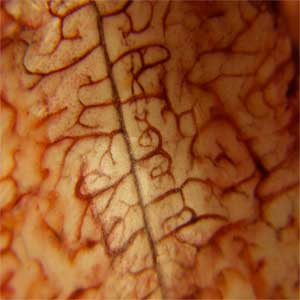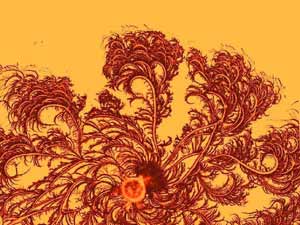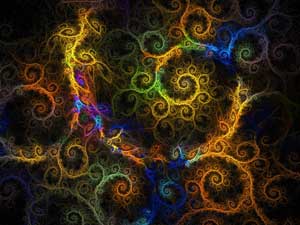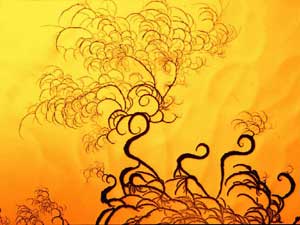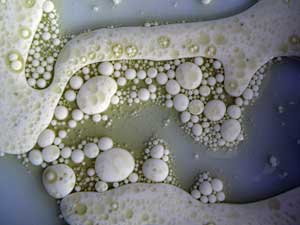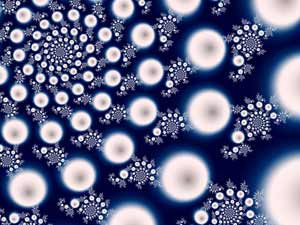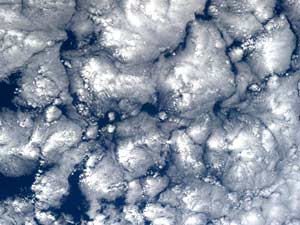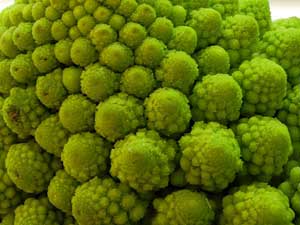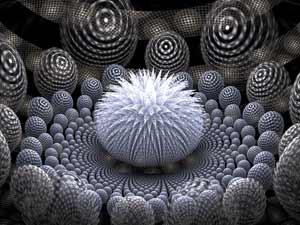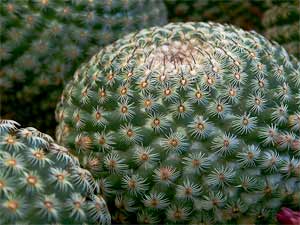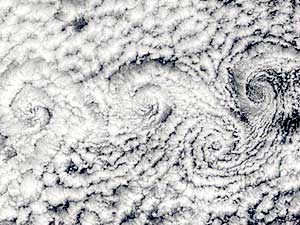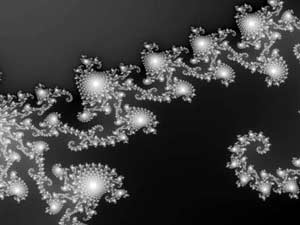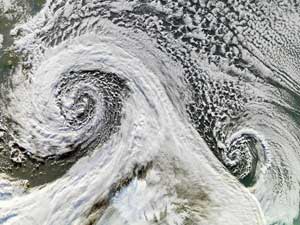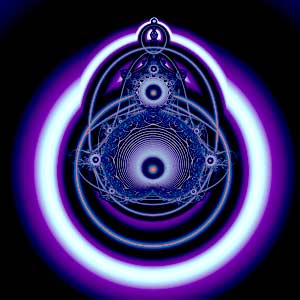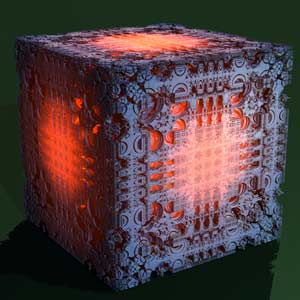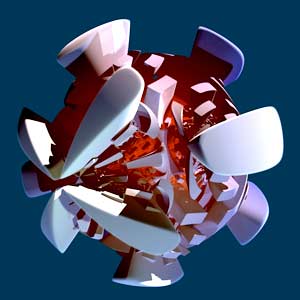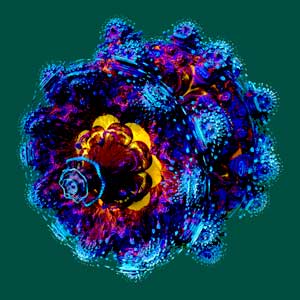Life is a wave, which in no two consecutive moments of its existence is composed of the same particles.
—Pattern, Scale, Connection
June 30, 2013
From primitive nomadic tribes to ownership of land and property; from small settlements to mogul overlords; from small towns to mega-cities; from small countries to massive countries composed of smaller states — humanity has always expanded and adapted to fill available space. And while we may have plateaued at the moment due to having essentially filled Earth, we’ll figure out how to colonize the solar system and then, eventually, the galaxy. We’ll do this as long as mature, unfettered, fast, cheap, communication and transportation systems can hold humankind together. (The internet isn’t so much the brain of the human race as it is its circulatory system: information — news and instruction — is its blood.)
When humans migrate to a new region, the persons without those necessary characteristics to survive in that environment have their genes pruned from the pool. Then this (isolated) group over time becomes different in looks, customs, skin-colour and immunities from a similar group who settled in, say, a remote unusually dry environment, or else one where plentiful food is available year-round. It is the environment which shapes humans into ethnic groups. These ethnic groups fade somewhat gently one into another in terms of unique groups of genes — unless one or more of the groups is particularly isolated. On Earth, for example, that condition applied to Iceland, the Arctic, Japan; someday relatively soon it may begin to apply to Mars, then one or more of the moons of Jupiter or Saturn, then one of the 3 potentially-habitable planets around the star Gliese 667C (only 22 light-years away), especially if a means of open, faster-that-light communication can be developed. Humans will continue to be able to interbreed, or at least they have thus far.
The taming of local climates — with conditioned air, radiation blockers, vitamins, medicines, and other necessities — means people can live in virtually any habitable spot (meaning access to fresh water, breathable gases, and sources of plentiful energy). Colonialism, as it has done throughout human history, allows those with a strong drive to survive, to succeed, and to flourish, first as explorers, then later as pioneers. During the era of space exploration, there’ll first come one-way tickets to Mars (or wherever), then a settlement, a colony, a federation. In time will come specialisation — the planet with the most minerals will become known for mining and manufacturing; the lush planet will be known for agriculture; the barren planet will be visited for luxuries (feel-good drugs, jewels) and liberties (gambling, sexual indulgences). But always there must be open communication and easy migration for transactions, transfers, and autonomous control systems. What will those systems be? Alliances of multiple planetary bodies? Confederations of solar systems? A Galaxy Board of Government?
Fractals Made by Water
- The beach below Cap Gris Nez, near Calais, France.
- Left by melting ice, Sakha, northern Siberia, Russia.
- Chilly weather leaves ice crystals on a car window.
- Discovered during an investigation of the National Park on behalf of the Consejo Superior de Investigaciones Científicas (Scientific Investigation Council), this awesome image shows natural fractals from vegetation at the end of a small river delta. It looks as if the clearing was once a small lake within the marshland but has since dried up considerably, leaving a brain-like appearance to the landscape.
- The sky over the University of Queensland, St Lucia, Queensland, Australia.
- Cloudless skies allow a clear view of Tibet in mid-December 2008; the Moderate Resolution Imaging Spectroradiometer (MODIS) flying onboard NASA’s Terra satellite shows snow caps on some mountain peaks and ice partially covering some lakes in this high-altitude region nicknamed the “Roof of the World.” The Tibetan Plateau is the source of many of Asia’s major rivers, including the Brahmaputra, Indus, Ganges, Salween (Nu Jiang), Mekong (Lancang Jiang), Yangtze (Chang Jiang), and Yellow (Huang He).
First, what is a fractal? It’s a shape that, when you look at a small part, has a similar (though not necessarily identical) appearance to a larger part. Take, for example, a rocky mountain. From a distance, you can see how rocky it is; up close, the surface is similarly rocky. Little rocks have bumpy surfaces like those big rocks do and resemble the overall mountain. Fractal forms are abundant in nature — from the coastlines of continents, courses of rivers, clouds in the sky, lightning, branches of plants (and veins in their leaves), and shapes and patterns of seashells and snowflakes.
Another property of fractals is that they have something called a fractal dimension, where one dimension of the mathematical formula used to describe the object isn’t a whole number like 1, 2, or 3, but is instead something in between. In other words, one component of a fractal is a “fractional” number. That’s why they’re called fractals, because the dimension in which they exist is a fraction. In 1975, French mathematician Benoit Mandelbrot realised that a seemingly infinite complexity of form could be derived from a simple formula: z’=z²+c. Take a non-whole number, multiply it times itself, and add back in the original number. Continue to repeat. Mathematical fractals are 'pure’ examples of what a fractal is because you can reach infinity — no matter how small or how large you go, there’re always more numbers. Real life never matches mathematics — at least, not so far as we’ve seen. There is a limit to how small things can be, and how large they can be. But the overall fractal-like pattern is present even with those boundaries.
The interesting thing about fractals is that many types get wildly different as you zoom in. They’re still self-similar, but not rigidly so. The features you see as you zoom change — a little bit of familiarity, still, but with unexpected twists. With a single fractal shape, you can explore forever and never see everything it has to offer. The further you zoom (either in or out), the more likely you are to see something that no one has seen before. With modern computers, it’s easy to zoom and zoom and zoom. A mere few clicks and you may have zoomed so far that the original fractal image is larger than the sun or smaller than an atom.
Our whole universe appears to be:
- Fractal — the same pattern of wholeness is found at every scale.
- Synergistic — the whole is greater than, and unpredictable from, the sum of the parts.
Many sites online offer as fractal examples comparisons between the honeycomb-like representation of the universe and a CGI representation of a gene folded into a ball resembling a skein of yarn, which is able to unfold without tangles; between the universe zoomed to a constellation and a group of neurons; between intersecting galaxies and Lorenz attractors; between spiral, doughnut-shaped, or scattered galaxies and common fractal patterns. Fractal patterns abound and fractal scaling is clearly present throughout the cosmos. Is this supposed to mean something?
That takes us to synergy: life is a synergistic phenomenon. Take all the “pieces” of a human body and lay them out separately. Even when you imagine combining them all with the functions each performs and the relationships each has with the others, could you possibly predict that acting together those parts could write a symphony? What is important about synergy as an aspect of the cosmos is that, though we can’t predict what, we know that combined contributions have emergent properties. Likewise, fractals are a self-contained, potentially infinite, surprisingly dynamic system with very specific rules and behaviours. A seemingly static mathematical field is capable of generating a variety of dynamics that, on closer examination, closely resemble the dynamics and forces that we see in our own world.
Universes are alive in the sense that they can pass on hereditary information, show variability from one generation to the next, and are subject to selective pressures. It seems ironic that evolutionary biologists should take such an idea seriously enough to comment (even sceptically) on it, while at the same time treating with derision the much less radical proposal that ecosystems or planets (in particular, Earth) may also be alive. The possibility that life forms exist at levels above that of individual organisms is generally denied because these higher-order systems fail one or more of the criteria established for the recognition of life. But this seems tautological; there’s no reason to expect that super-organisms meet criteria based on observations of individual organisms. Isn’t it time to consider the possibility that the boundary between life and non-life may be diffuse, non-stationary over time, and dependent upon scale? In other words, life may be ubiquitous throughout the galaxy — and it will follow similar patterns. Complex organisms are made up of myriad smaller, equally (or even more) complex organisms, and so on down. Aliens may not have cells, but they’ll have something similar. The entire universe is full of life and that life is similar regardless of where you look. Everything in life is connected and all the universe is alive within these connections.
Where it breaks down is the communication. If the universe is full of life, but that life is so far away from each other that they can’t communicate on a reasonable time scale, that requires one of two things to be the case: Either the universe is the large-end limit of the fractal, or the fractal pattern includes time as well, and communication on a timescale of 50,000 to 100,000 years between messages holds with the pattern. But even if interactions can take place on that time scale, life tends to be too fragile and malleable for those interactions to be meaningful — so unless we do find a method of travelling and/or communicating faster than light (which we may!), then the large-scale cap on the fractal pattern of life is somewhere in the order of three solar systems.
Living Fractals
- Located within the provinces of Huelva, Sevilla, and Cádiz, Parque Nacional de Doñana has grown around the delta of the Guadalquivir River and is one of Europe’s most prominent wetland reserves and conservation centres. It covers an immense 1,300 sq kilometres area and is popular with a huge variety of migrating birds (including 5 threatened species) and also the critically endangered Iberian Lynx.
- Chou Romanesco is so visually stunning an object that on first encounter it’s hard to imagine you’re looking at a garden vegetable rather than an alien artefact. It’s a member of the species Brassica oleracea L, which includes cabbage, broccoli, Brussels sprouts, cauliflower, collard greens, kohlrabi, and numerous others.
- In woody stems, the periderm takes over the function of the epidermis. The periderm consists of cork tissue and cork cambium. In order to survive, trees have developed systems to get water and nutrients to all the leaves and branches.
- Sliced in half horizontally (cross section), this shows Fibonacci spirals of leaf arrangement. Given a modern understanding of fractals, a growth spiral can be seen as a special case of self-similarity.
- Lichens grow on a granite gravestone in Lake Champlain, New York.
- Researchers at Duke University linked brains of rats across continents via the internet in a demonstration of what they call the world’s first organic computer. Surprisingly, rats were able to share sensory information through interfaces and thereby performed simple tasks with success rates above chance level.
The extension of the concepts of fractal geometry toward the life sciences has led to significant progress in understanding features characterising cells and tissues during ontogenesis and during both normal and pathological development processes. Fractal geometry may even provide a coherent description of the design principles underlying living organisms. Fractals are highly organised, irregular in shape, functionally and morphological self-similar, invariant to scale, have a path to iteration, and have a peculiar non-integer fractal dimension. But whereas mathematical objects are self-similar over an unlimited range, biological components are self-similar within upper and lower limits (called a scaling window) in which the acceptable relationship between scale and size is established.
Fractal organisation controls structures all through the human body. The standard description of bronchial branching proved to be quite wrong; a fractal description turns out to fit the data. The urinary collecting system (kidneys, bladder) has proven to be fractal. The biliary duct in the liver. Blood vessels in the lung. The network of special fibres in the heart that carry pulses of electric current to the contracting muscles. The brain, too, has a fractal organisation.
Self-organising critical systems are very good at making connections, both internally and also to other surrounding systems. The branches of a tree are connected in a lovely way. If you shake one branch, you’ll see broad shaking across the tree (fractal structures hang together nicely) yet branches may be trimmed without affecting the overall structure. Indeed, if you trim them far enough out (above the growth bud), they’ll often grow even stronger, with more complex connections in the outer branches. Finally, branchlike patterns easily connect to other systems — a literal web of life. A tree with many fractal branches (and also roots) can better connect to the sun (and soil) to gather and exchange life-sustaining nutrients.
Surviving proliferating life has always been a cooperative affair since cooperation is most successful for overall growth and survival. Cooperation requires all sorts of interactions, including maintenance, protection, and foraging for energy (food). Organism interactions constitute a culture. Cultures require energy. Now, around 4 billion years after initial genesis, humans find themselves short of energy and in need of exploiting more directly the energy from the sun. What we’re evolving now is a super organism called humanity and a reality in which all of us know ourselves to be cells in the body of one living organism, our planet. Successful space travel will require that humanity be able to successfully work together.
Bear in mind that while culture emerges from (and co-evolves with) beliefs and values contained in individual human minds, they aren’t one and the same. The relationship is that of genotype (individual beliefs/values) and phenotype (cultural memes). But individuals die, while culture persists, thrives and evolves regardless of — and beyond the control of — any single individual. Culture is at a higher fractal level. Now consider: If corporations gradually replace people as the fundamental “actors” in politics, will we notice? Indeed, could it already have happened? In 1886, the United States Supreme Court ruled that corporations count as legal “persons” with 14th Amendment rights to due process. By now, one could argue that corporations control more of the political process than individual humans do, and that even CEOs are powerful to the extent that their objectives match those that corporations are optimised for: doing whatever it takes to bring in money in the form of profits and investment.
A corporate agent is a cooperatively emerging one, dependent on constituents somehow aligning their own goals and actions with one another. At first, when it’s just a few close friends or colleagues, this is easy. But as time goes by and new members are added, new functions, sub-goals and sub-plans are created; corporate agency develops and subtle conflicts naturally arise between individuals with different self-interests and those whose interests are entirely aligned with the company. Functional components (departments, processes) and corporate goals, once singular, are now multiple and not always harmonious. Structure is created (hierarchy, policy, rules, procedures and decision-making processes) to mediate conflict in service of one main thing: corporate agency. This is an example of information at the higher level (that of corporate agent) being fed back into lower-level dynamics, constraining constituent agents’ actions to those that promote corporate wellbeing. Structures and dynamics which lead to corporate wellbeing get solidified and amplified, pushing out those elements which don’t, and so on. Family health coverage and equal opportunity policies each work to the benefit of certain members and at the expense of others, but both work to benefit the company as a whole. These are examples of dynamics which simultaneously promote corporate agency and are a result of it — and it’s a classic fractal pattern.
Fractal Art Imitates Fractal Life
- Biological metallurgy involves a microorganism containing an ore-leaching solution that it uses to gain the metals that it needs for life (also called microbial leaching). These microorganisms use ore oxidation to obtain energy. Bioleaching is mainly used on waste rock, tailings, and slag in order to recover more precious or rare metals. These are mostly acidophilus bacteria; they eat pyrite, arsenopyrite and other metal sulfide minerals. These acidophilus bacteria produce sulfuric acid and ferric sulfate or ferric sulfate and then the solvent leach to change copper, nickel or uranium (and sometimes gold and silver) into soluble compounds. In addition, the surface of these microbial cells produce a variety of enzymes.
- This one isn’t fractal bacteria, but just a pure fractal.
- In a sense, the strikingly beautiful organisation of pattern reflects the underlying social intelligence of bacteria. The once-controversial idea that bacteria cooperate to solve challenges has become commonplace, with the discovery of specific channels of communication between the cells and specific mechanisms facilitating the exchange of genetic information. These capabilities should not be surprising, as bacteria set the stage for all life on Earth and indeed invented most of the processes of biology. As we try to stay ahead of the disease-causing varieties of these versatile creatures, we must use our own intelligence to understand them. Never underestimate this opponent! Bacteria were long perceived as simple creatures, but are now recognised to be smart beasts that can conduct an intricate social life while using sophisticated chemical language. While the number of bacteria in a colony can be more than 100 times the number of people on Earth, bacteria are twittering to make sure they all know what they all doing (by exchanging “chemical tweets”). Bacteria are the most prolific organisms on Earth. Many are fierce killers (our enemies), but many more are indispensable to our survival (our friends). In our rush to free the human race from deadly bacterial diseases, we created a major health problem worldwide: bacteria are becoming increasingly resistant to antibiotics. Even in the West, they’re one of the top 3 killers in hospitals today. Unaware of bacteria’s social intelligence (which allows them to learn from experience to solve new problems and then share their newly acquired skills) we use antibiotics indiscriminately. As a result, bacteria developed multiple drug resistance, and now we can’t invent new drugs fast enough to beat them.
- The oil had served as marinade for sundried tomatoes — tasty as well as lovely.
- A classic pure fractal pattern.
- Fractal clouds imitate art.
Life is an aggregation of temporarily constrained energy packaged into genes, genomes, and organisms — a virtual affair that pops in and out of existence in its matrix (the energy constrained in Earth’s biosphere), both supporting and maintaining it. A genome is a multi-gene organism consisting of a cooperative commune of its member genes. Earth is a constrained energy pocket which nurtured first independent individual genes, then the cooperative aggregate known as a genome, then multi-genes organisms with functional protective membranes, then variety — and what variety! In humans, as many as 10,000 separate copies of mtDNA are usually present per cell (egg and sperm cells are exceptions) — with each cell being something of a small mitochondrial city. In mammals, each circular mtDNA molecule consists of 15,000-17,000 base pairs, which encode the same 37 genes: 13 for proteins (polypeptides), 22 for transfer RNA (tRNA) and one each for the small and large subunits of ribosomal RNA (rRNA). Mitochondrial genes are archaic, individual, independent, organisms which have evolved into interdependent members of a larger genome. They’re tasked with controlling the relatively big invaders, otherwise known as bacteria (they’re the city’s police force). Scientists find one type of white blood cell releases its mitochondrial DNA, along with toxic proteins, as a defense against invading bacteria, but they’re unsure how the cells are able to catapult this DNA with such force. The team speculates that these DNA-protein nets may actively lasso bacteria or at least provide a physical barrier to stop invasion. (They’re like the sheriffs in the Wild West.)
A single bacterial species living in a gold mine in South Africa survives on its own, not as an aggregate. Its genome contains everything it needs to live independently and it uses radioactive energy as a power source. These bacteria reproduce very slowly, perhaps taking up to 10,000 years to replicate. This very long life cycle is due to the steady state of its completely protected environment. The price of long life in this circumstance is surely boredom and a diminished awareness of surroundings.
Phase is built into all cyclic events, from light waves to waves in the ocean. And just as a tsunami and a ripple on a pond can have the same profile, so, too, phase relationships can be recorded in an area that is very large or very small. If memory functions on the same principle as the hologram, then it could fit into a much tinier space than a human brain, a space much smaller than even an E coli. It’s the pattern of interaction between waves that counts. And the same pattern can have different dimensions. Despite identical genes, in spite of the same environment, individual E coli acquire individual quirks and continue to display them for the rest of their lives. Bacteria exhibit rudimentary personalities. They exhibit traits that are determined by neither heredity nor environment but by chance. A zone of uncertainty — of individuality, if you will — surrounds the neighbourhood of intelligence in even the lowliest form. And when we start to talk of individuality, that brings a microbial mind very, very close to the realm of human experience. It’s not a question of people and bacteria being the same thing. But the meek and the mighty perform similar tricks and display common principles. The utter simplicity of the microbial mind brings us nearer to the meaning of our own.
To compare a cell’s complexity with that of a brain is suggestive. Like a brain, a cell is a system for processing information. To the modern way of thinking its internal design is less reminiscent of a set of reaction vessels than of an array of switches — not so much a factory, more the smallest microprocessor. There are differences, of course. Microprocessors, like most man-made computers, can handle only one instruction at a time. Cells, again like brains, can handle lots. But the similarities are striking. The biochemical network within a cell is a machine for shuffling data as much as it is one for manipulating molecules. Every step it takes is dictated by chemical messages from within and without — from the genes in its DNA, from hormones interacting with its surface receptors and from its chemical “memory” (substances it has recently made to remind it what to do next). And instead of electrical energy to power this machine, there is more chemistry: adenosine tri-phosphate (ATP), a molecule that charges proteins with the pizzaz they need to perform their chemical and informational transformations.
If living organisms are a fractal of their single cells then presumably the planet is a fractal of living organisms. If existence is structured along fractal lines, then it is very difficult to avoid the conclusion that Earth is a single organism (perhaps even one with a consciousness). If our planet is a single organism, then what is Homo sapiens? What is the role of humans? Perhaps akin to the role of immunity cells in the body — “to serve and protect.” The Biblical idea that humans are meant to be the stewards of the planet could be an early expression of an understanding that humans are immunity cell equivalents. And it’s important to note that immunity cells are not simply the “cops” of the body but rather have the ability to embrace new things and to learn.
Personally, I think of cells as aware — sentient, perhaps — with the equivalent of culture, rules, purpose. I think I’m an emergent product — a by-product, even — of their complex interactions. Likewise I think lives and types of lives braid together to create meta-lives. I see nothing mystical about all this — there’s no reason for life, and even complexity, not to be fractal, to regress and progress. I’m a matrix and I’m in one. I accept that the flow of humanity can bend me in a certain direction and change the course of my existence merely by virtue of the place and time in which I live. But if I’m not one of the “connections” life prunes early, I specialise, plug in, and do my “thing” — my life’s work.
Some people collect power, others knowledge or money or whatever. Collectors become “strange attractors”, the framework for bigger patterns to emerge that involve more living things. It’s all so impersonal. We’re quite small, really, staking out our path and trajectory. While we maybe can sometimes choose what level to live on, at least on rare occasions, I mostly see myself buffeted, grasping for whatever’s in reach, and occasionally able to build an artful structure from unrelated bits. Novel connections — that, I see is the value-add for humans. (I do think instinct directs us more of the time than most of us would care to admit.)
The most drastic order that a cell can receive is to kill itself. Cells infected with viruses are often told to commit suicide, as are tumour cells. In our bodies, at a cellular level, there are constantly cells which arrive at the point where they’re no longer useful, and they then commit suicide — a natural process called apoptosis. If a cell should commit suicide but for some reason doesn’t, then the “cell police” (lymphocytes) go after it, hunt it down, and kill it. If apoptosis doesn’t occur, our bodies will bloat and cease to properly function. We will soon die.
So some death is absolutely necessary. Since I believe life has a fractal nature (all the way to the level of the universe), presumably in a perfect world it becomes apparent when certain people are no longer useful or necessary. I acknowledge that there appear to be people who don’t discernibly benefit the human race in any way — people it seems everyone would be better off without. In theory, criminals who are executed could be among them. (My biggest problem with capital punishment is that too many mistakes are made.) I don’t want the responsibility of being the human equivalent of a lymphocyte; however, should a prisoner confess guilt and expresses a desire to die, I’d have no objection if that death were made pleasant — I see no reason why any death should be accompanied by pain, fear, or humiliation (this includes the deaths of all animals which become human food, too). Likewise, when a person concludes on his/her own that life has become superfluous — and I presume he or she would know the same way cells seem to know — when all communication, all intimacy is cut off — then he/she should be able to undergo an apoptosis-like procedure whereby death is effected in a pleasant, painless (even pleasurable) manner (like in the movie Soylent Green). It surprises me when I meet someone who is for capital punishment but against doctor-assisted suicide.
Or Maybe It’s Life That Imitates Art?
- This vegetable’s branched meristems make a logarithmic spiral. In this sense its shape approximates a natural fractal (the pattern is only an approximate fractal since the pattern eventually terminates when the feature size becomes sufficiently small). Each bud is composed of a series of smaller buds, all arranged in yet another logarithmic spiral; this self-similar pattern continues at several smaller levels. The vegetable is rich in vitamins C and K, dietary fibre and carotenoids.
- Made using Xara graphics software.
- These small cacti are about 3” diameter, all in a sale tray at the Boyce Thompson Arboretum in Superior, Arizona. The horticulturist there names the plants and these had little identification stakes with “Pettable cactus” imprinted. In the lower right corner you see a peeking pink bloom on another of these cacti in the tray. The ones that were blooming had rings of scarlet flowers around them.
- Satellites can take in thousands of miles of Earth’s surface in one shot, revealing complicated and intriguing cloud patterns we could never see from below. Often, clouds are clearly in a Mandelbrot set…
- Types of Fractals include Julia sets, Mandelbrot sets, Kleinian Group, Newton Method, Quaternion 3D, and Hyper-Complex (includes Mandelbulb and Mandel box fractals). Types of Patterns in nature include symmetry, approximate fractals, spirals, chaos, flow, meanders, waves, dunes, bubbles, foam arrays, crystals, tilings, cracks, spots and stripes. There you have it — nature summed.
- Two cyclones are observed after forming in tandem in November 2006. The Moderate Resolution Imaging Spectroradiometer (MODIS) onboard NASA’s Terra satellite took this picture south of Iceland (south is up in the image).
Of all the predictions that we can make about life on other worlds, the surest seems to be that their lives will be made of elements nearly the same as those used by life on Earth. If life on our planet consisted primarily of 4 extremely rare elements in the cosmos, such as niobium, bismuth, gallium, and plutonium, we would have an excellent reason to suspect that we represent something special in the universe. Instead, the chemical composition of life on our planet inclines us toward an optimistic view of life’s possibilities beyond Earth. The composition of life on Earth fits the Copernican principle even more than one might initially suspect. If we lived on a planet made primarily of hydrogen, oxygen, carbon, and nitrogen, then the fact that life consists primarily of these 4 elements would hardly surprise us. But Earth is mainly made of oxygen, iron, silicon, aluminium, and iron. Only one of these elements, oxygen, appears on the list of life’s most abundant elements.
When we look into Earth’s oceans, which are almost entirely hydrogen and oxygen, it is surprising that life lists carbon and nitrogen among its most abundant elements, rather than chlorine, sodium, sulfur, calcium, or potassium, which are the most common elements dissolved in seawater. The distribution of the elements in life on Earth resembles the composition of the stars far more than that of Earth itself. As a result, life’s elements are more cosmically abundant than Earth’s — a good start for those who hope to find life in a host of situations.
The holographic paradigm is the employ of theories/concepts utilising holographic structures with the vision that such may lead to a unified understanding of consciousness and the universe. It was so named because its central metaphor is that of the hologram — or, to be more specific, a certain unusual feature of holograms. The basic process for creating a hologram involves the use of a laser and a beam splitter, an optical device that sends half the light in each of two directions. One of the beams illuminates the object you’re recording, and the light reflected from the object collides with the second beam. When these two beams meet, the effect is much like what you’d see if you tossed a pebble into a pond and then, as the ripples were still spreading, tossed in another pebble. The pattern formed where the two sets of waves meet is called the interference pattern, and that is what’s recorded on film when a hologram is made. Today it’s common to see reflective holograms that can be viewed under ordinary light. Originally, however, they could be viewed only by exposing the film to the same type of light used to create it. If you looked at the film with the naked eye, all you saw were patterns of ripples; shine the right kind of light onto it, though, and an image would emerge in 3-dimensional glory.
This type of hologram has another curious property. If you cut the film in half and expose just one piece to laser light, you still see the entire image. In fact, you can keep making smaller and smaller pieces, and each one still displays the whole image rather than just a part — though clarity degrades as pieces get smaller. This “whole-in-each-part” quality provides the crucial insight. Rats taught to run a maze had portions of their brains surgically removed. No matter which part of the brain was removed, the rats still remembered how to run the maze. Likewise, humans with brain injuries or who’ve had portions of brain removed for medical reasons never lose memories selectively (as in forgetting half a story) — though overall memory sometimes becomes hazier. Apparently the brain stores memories in a way analogous to holography by recording diffuse patterns of electrical waves.
3D Fractals from Duncan Brinsmead
Emergence is a fascinating phenomenon where complexity can develop through iteration of simple rules or processes. The idea of emergence is that systems are not completely scale-invariant. Add up a bunch of pieces, and the aggregate displays properties and behaviours which the individual pieces don’t. The more surprised we are by the properties of the whole, the stronger we say the emergence is. Sometimes, the aggregate behaviour can be predictable from the basic laws of the small-scale parts (for example, temperature and pressure of a gas), but in other cases, there’s so much historical and biological contingency involved that the basic laws of quantum mechanics, electromagnetism and such aren’t sufficient anymore. The ability of chlorophyll to trap sunlight for photosynthesis is an example: we can check that the reactions are consistent with physical law, and we can use physics to calculate various things about the phenomenon, but we couldn’t start with quantum mechanics and an empty notebook and then prove a theorem saying that photosynthesis will happen.
Thinking is all we have that makes us be us. Practice it daily.
 Animals
Animals Animation
Animation Art of Playing Cards
Art of Playing Cards Drugs
Drugs Education
Education Environment
Environment Flying
Flying History
History Humour
Humour Immigration
Immigration Info/Tech
Info/Tech Intellectual/Entertaining
Intellectual/Entertaining Lifestyles
Lifestyles Men
Men Money/Politics/Law
Money/Politics/Law New Jersey
New Jersey Odds and Oddities
Odds and Oddities Older & Under
Older & Under Photography
Photography Prisons
Prisons Relationships
Relationships Science
Science Social/Cultural
Social/Cultural Terrorism
Terrorism Wellington
Wellington Working
Working Zero Return Investment
Zero Return Investment

